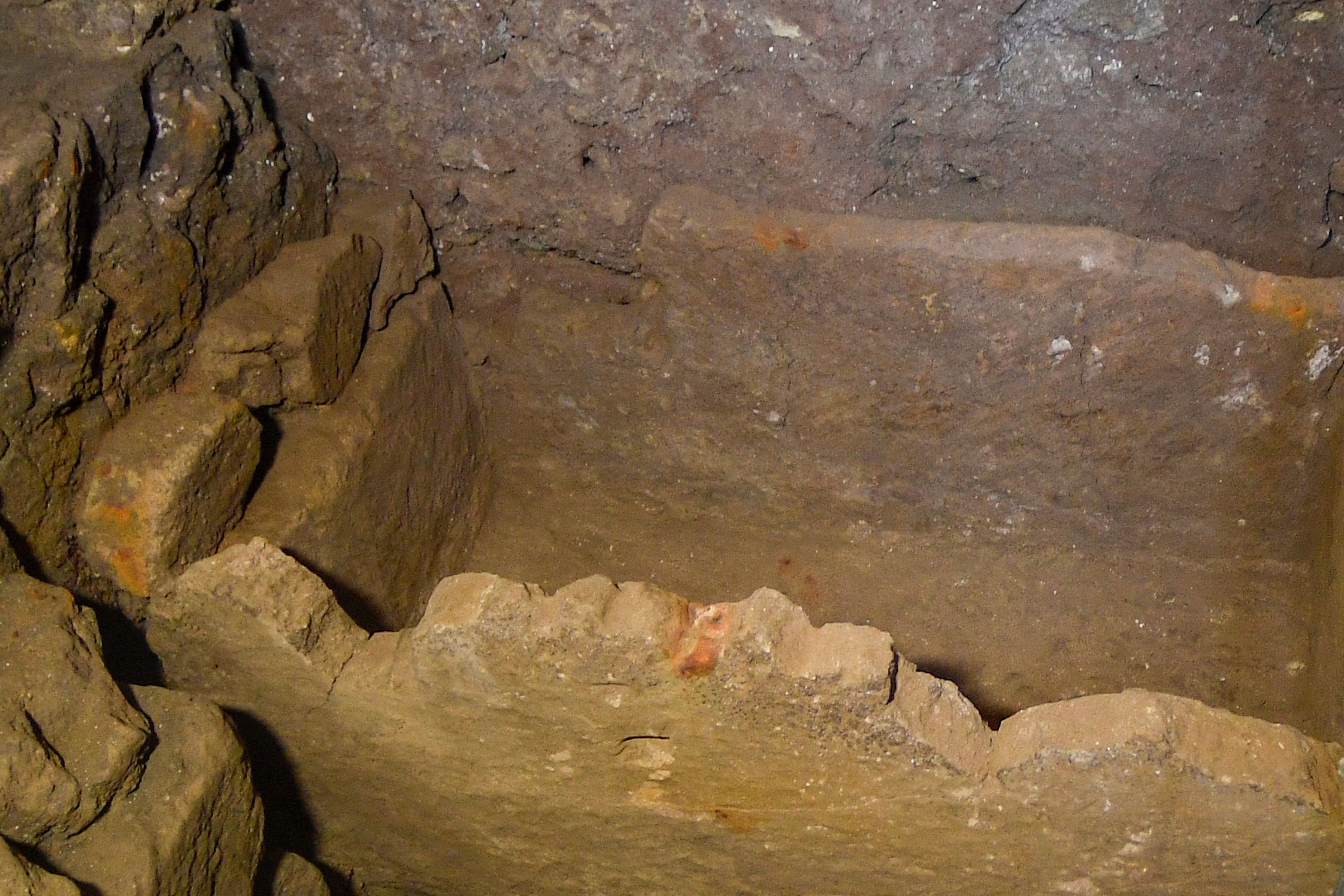
A newly discovered stone tomb, found on the site of an ancient temple in the Roman Forum, has experts excited: Could the sarcophagus be the final resting place of Romulus, said to be the founder of the Eternal City?
The find, a hypogeum—or underground temple—which is believed to date to the 6th century BC, was announced at a press conference in Rome on Friday. It is located just a few meters from the Lapis Niger, a site closely associated with Romulus, alternately thought to be the site of his tomb or perhaps the scene of his murder at the hands of the senate.
“This is an amazing discovery,” said Colosseum Archaeological Park director Alfonsina Russo, according to Italian news wire Agenzia Nazionale Stampa Associata. “The Forum never ceases to yield amazing fresh treasures.”
The four-and-half-foot-long tufa tomb bears a Greek inscription warning that this is sacred ground, not to be disturbed. “It refers to the burial site of a holy king and the oldest and most important king is Romulus,” Andreas Steiner, editor of the magazine Archeo, told the Australian Times. Together with the location, that leads archaeologists to believe that the newly discovered tomb and altar is indeed linked to Romulus.
People stand by the access to an ancient tomb thought to belong to Rome’s founder Romulus on February 21, 2020 at the Curia – Comitium in the Roman Forum of Rome. Photo by Filippo Montforte/AFP via Getty Images.
But the experts are stopping short of officially declaring this to be Romulus’s burial site. “It’s only a suggestion based on ancient sources, all of which speak of the presence of the tomb of Romulus in this area of the Forum,” head archaeologist Patrizia Fortini told Agence France Presse.
There were no bones found inside the tomb—and there’s no proof that Romulus was even a real historic figure, even though his story was told by the ancients, such as Livy, Plutarch, and Virgil.
“This is not the tomb of Romulus per se,” Russo told the Daily Beast. “It is a place of memory where the cult of Romulus was celebrated.”
Romulus was the twin bother of Remus. According to legend, the pair were abandoned as babies and suckled by a kindly wolf. It’s a striking image, and one that has been a symbol of Rome since ancient times—as depicted in one of Ancient Rome’s most famous artworks, the 5th-century Etruscan bronze The Capitoline Wolf. The brothers are said to have disagreed over which of Rome’s seven hills to settle; Romulus killed Remus before founding the city and ruling as its king.
The Capitoline Wolf, Rome’s famous 5th-century Etruscan sculpture of Romulus and Remus. (The babies are a 15th-century addition to the work.) Photo by Jastrow, courtesy of Wikimedia Commons.
Later events might cast doubt on the presence of a corpse in the newly discovered tomb. The senate, for instance, is said to have torn Romulus’s body to pieces, so it might not have been possible to have buried his remains in the first place. (Plus, legend has it that his body was assumed into heaven.)
The tomb was first unveiled in 1898 by archaeologist Giacomo Boni, but he didn’t connect it to Romulus, and it was covered up by work done by Benito Mussolini in the 1930s. The rediscovered site, beneath the marble stairs leading to the Curia—a public meeting place for senators in the Forum—will probably not be open to the public until 2022, according to the BBC.
The excavations, which began a year ago, are set to continue, with Russo telling CNN to expect “further surprises.”